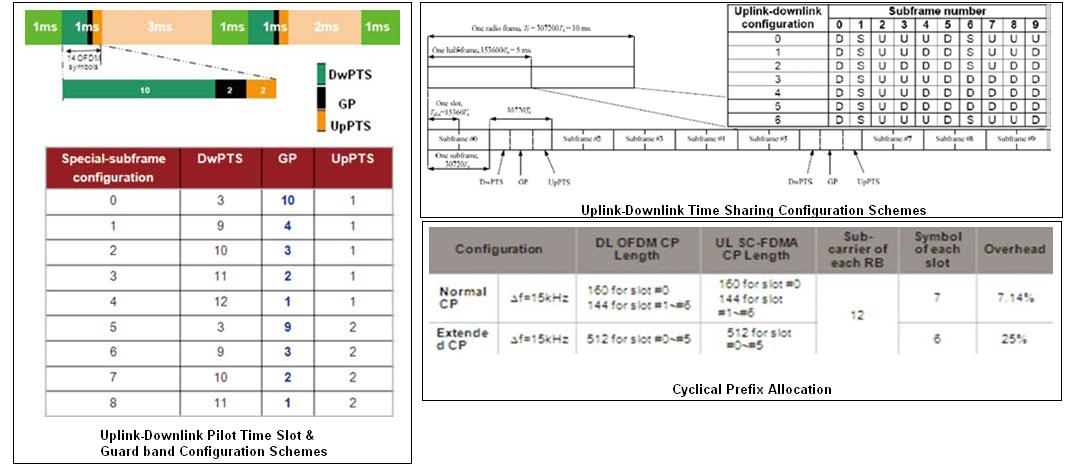How Time Slot Allocation for Uplink and Downlink LTE
Here I write down on How Time Slot Allocation for Uplink and Downlink LTE and How Cyclical Prefix Allocation for LTE
Time Slot Allocation for Uplink and Downlink – TDD specific
The time division nature of LTE TDD will also require radio engineers to consider how time slots are shared between uplink and downlink based on both customer input as well as commercial users usage pattern between uplink and downlink in that country. This will have a direct impact on the EUTRAN capacity. There are 7 time sharing configuration between Uplink and Downlink in LTE TDD as defined by 3GPP. They are shown in the figure below and in summary, they are (DL : UL) – 1:3 or 2:2 or 3:1 or 2:1 or 7:2 or 8:1 or 3:5
Besides time sharing configuration, there is also a need to define how uplink and downlink pilots are configured based on the Guard band requirement. The guard band duration is also a direct result of propagation delay requirement due to the designated cell coverage radius. Inadequate guard band provisioning will result in direct interference between users within the same cell due to difference in signal delay arrival. 3GPP has defined 9 different guard period configuration schemes for Operator to choose. They are listed in the figure above.
Cyclical Prefix Allocation
In order to accommodate extended propagation delay (e.g. due to large cell radius coverage), a lower order cyclic prefix value of 6 can be used instead of the common value of 7. This will result in the reduction of OFDM symbols that can be carried per time slot and therefore reducing the overall sector capacity.
How Time Slot Allocation for Uplink and Downlink LTE
In LTE, time slot allocation for uplink and downlink refers to how the network divides time into slots to manage data transmission. I’d explain it like this: for uplink, the device sends data to the cell tower during a specific time slot, while for downlink, the tower sends data to the device in a separate time slot. This allocation helps manage network traffic and ensures fair distribution of resources. The network dynamically adjusts these time slots based on factors like traffic load and user priority, optimizing data flow and preventing congestion. Efficient time slot allocation is crucial for maintaining a balanced and high-performance LTE network.
